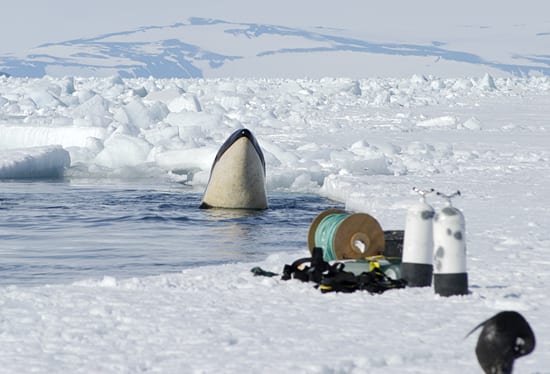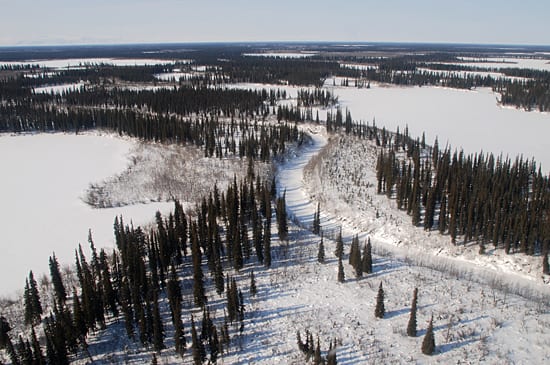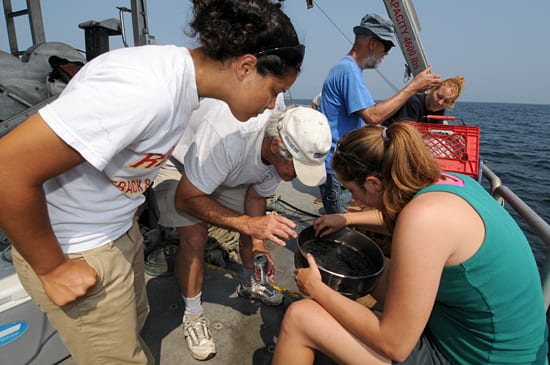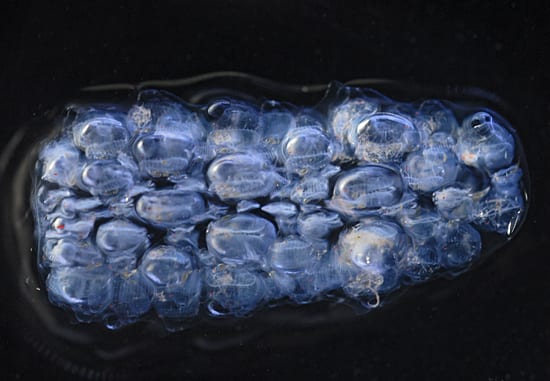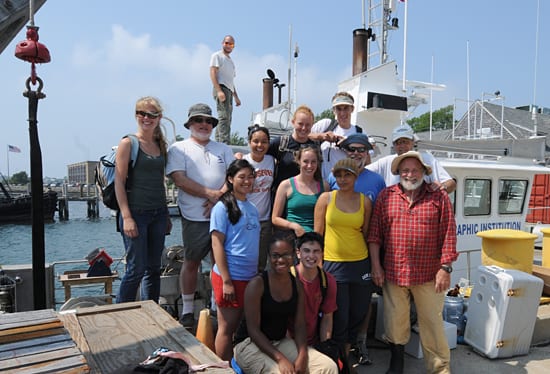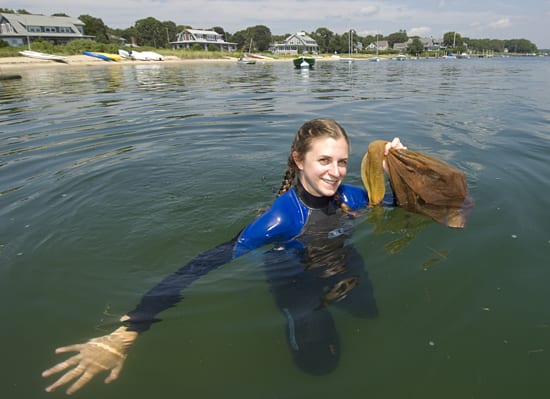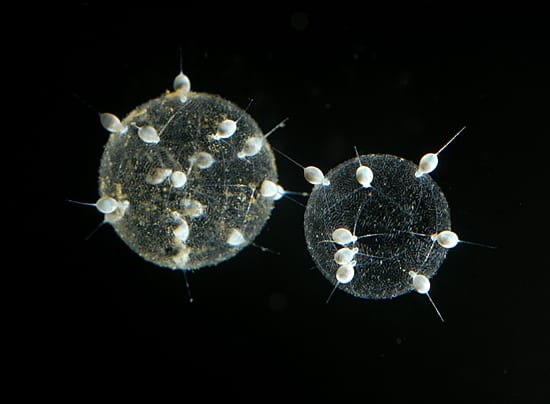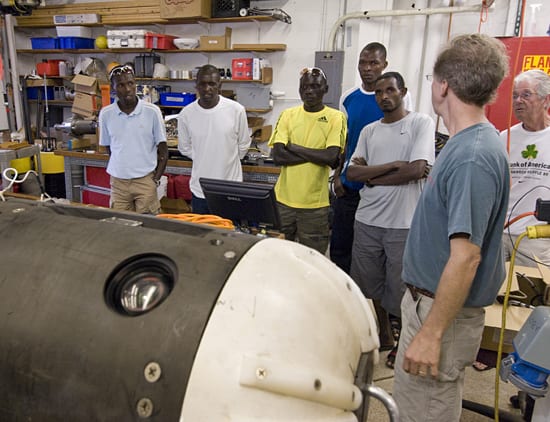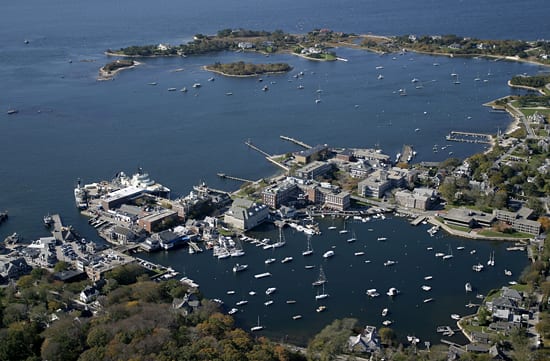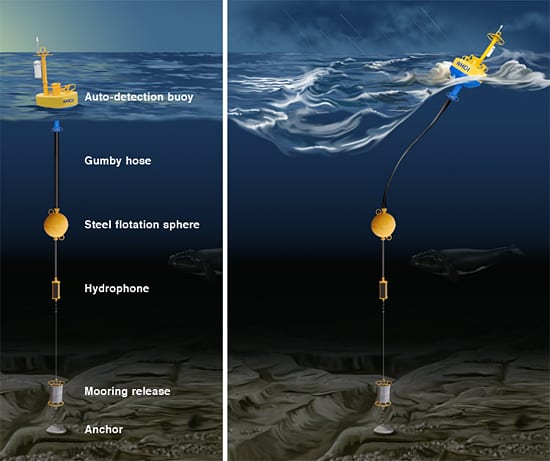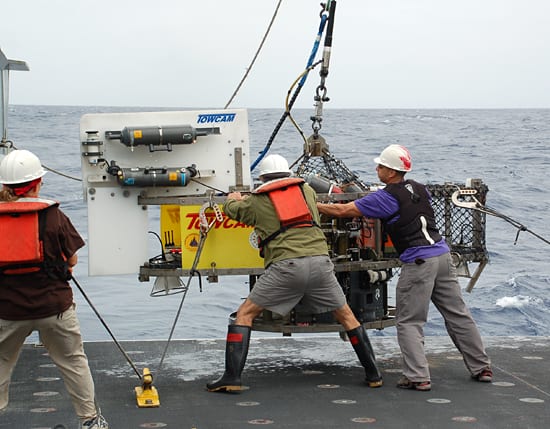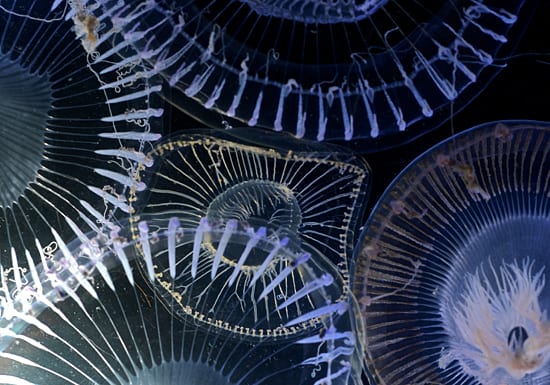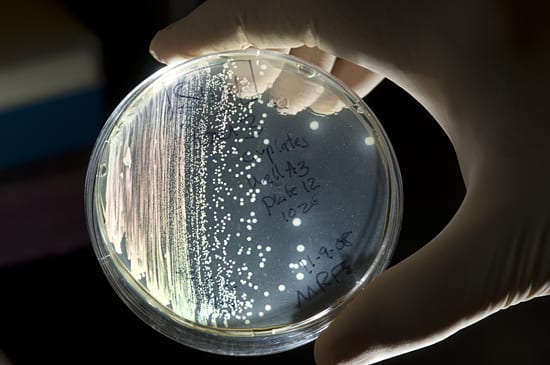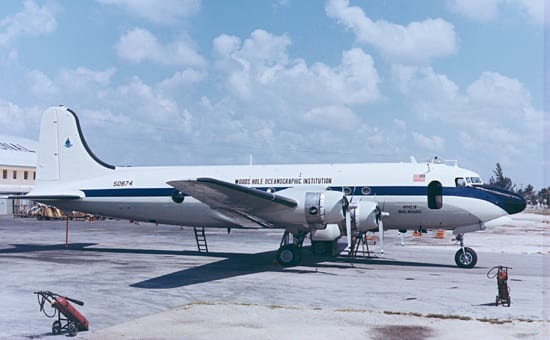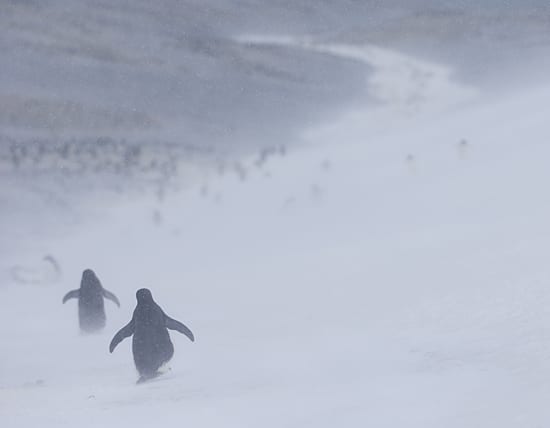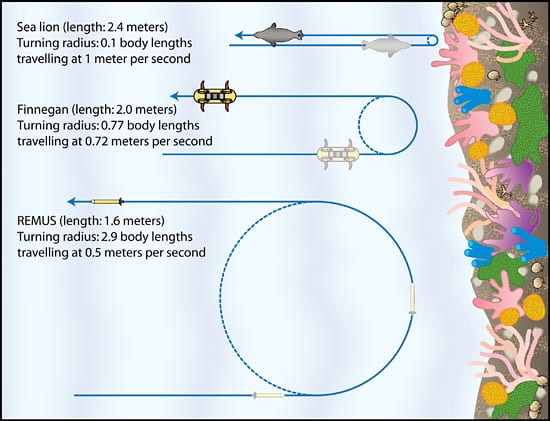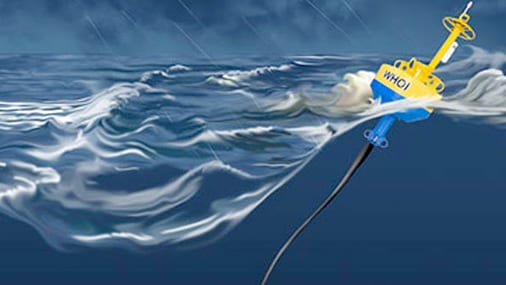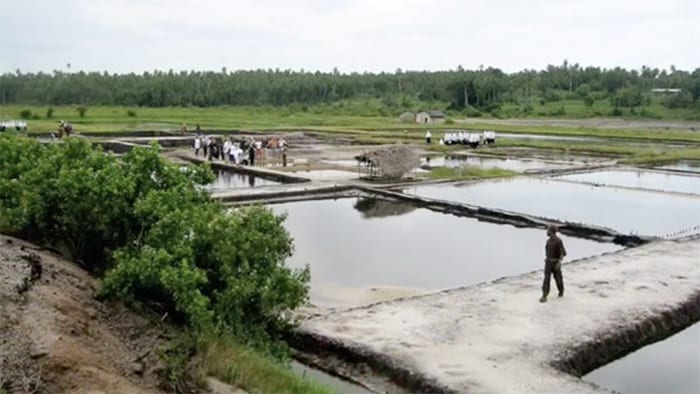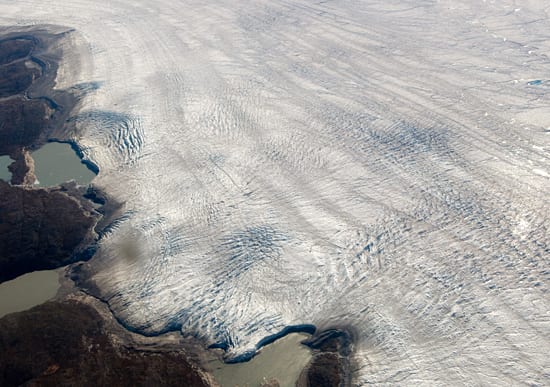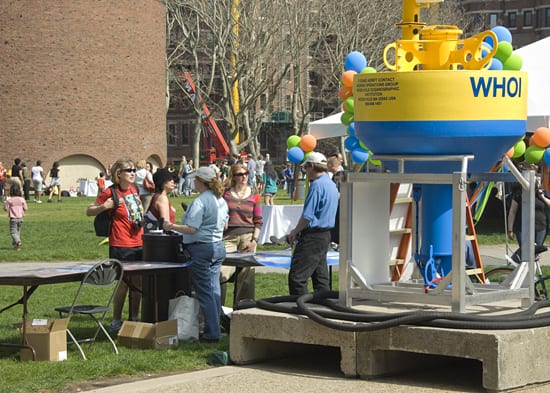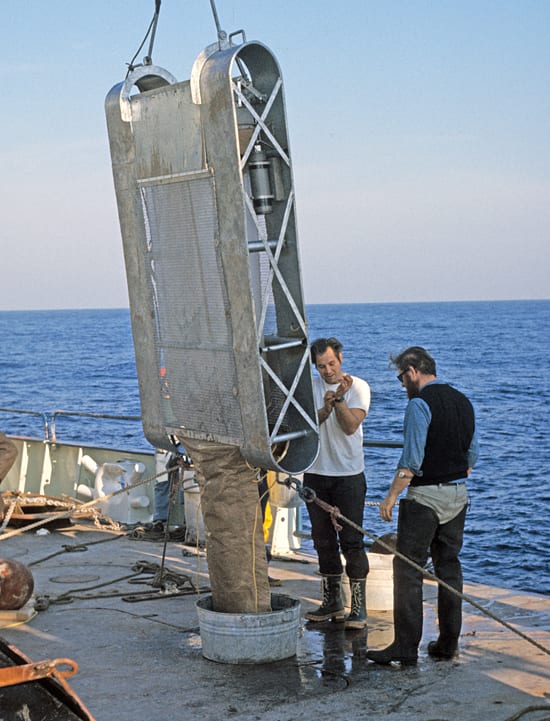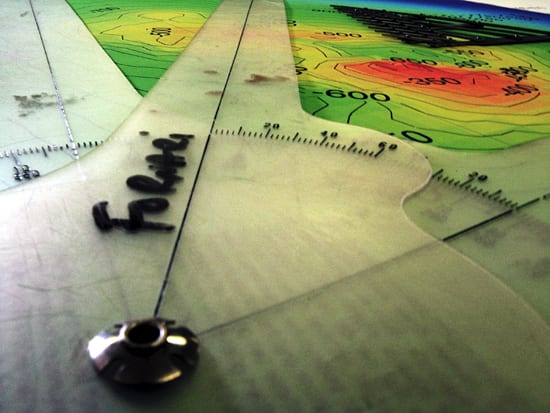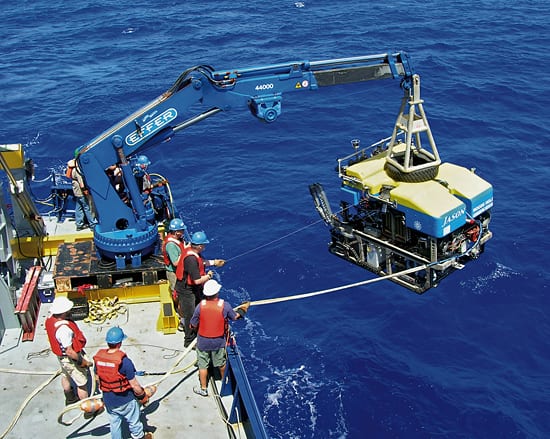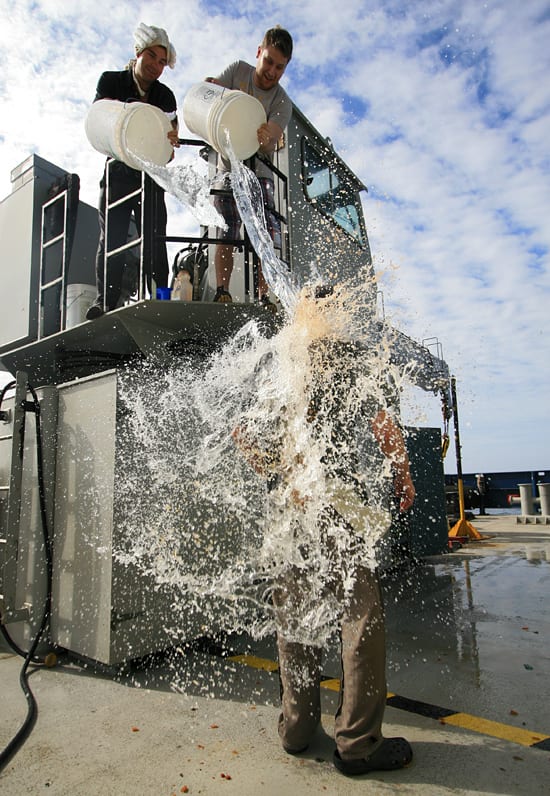Multimedia Items
Spy-hopping
Orcas (Orcinus orca), also called Killer Whales, sometimes spy-hop — hold their heads and upper bodies out of the water to look for prey. This Orca bides his time as…
Read MoreFlying high
An aerial view of Canada’s Mackenzie River Delta, where marine geochemists Tim Eglinton, Daniel Montluçon, and geologist Liviu Giosan are looking for clues to past climate change. During 2009 Spring…
Read MoreLook and learn
Oceanographer Emeritus and biologist George Hampson (center) and Hovey Clifford (blue shirt) retired WHOI dockmaster and present CPR teacher and EMT showing Summer Student Fellows Yadira Ibarra (left) and Abigail…
Read MoreBubbly ‘fire bodies’
Looking like a collection of bubbles, this pyrosome (the name means “fire body”) is a cylindrical colony, 7 centimeters (2.75 inch) long, made up of individual animals (the “bubbles”.) Each…
Read MoreWhat a summer!
Students from the WHOI Summer Student Fellowship Program and the Woods Hole Partnership Education Program (PEP) spent a sunny August day out on R/V Tioga learning basic oceanographic sampling techniques…
Read MoreThe lives of larvae
MIT/WHOI Joint Program student Christine Mingione of the Biology Department, collects larvae samples in spat collector bags. Many familiar marine invertebrates such as shellfish have lesser known larval stages that…
Read MoreInner-space colonies
They look like space stations, but actually are colonial forms of single-celled organisms called radiolarians, collected in the deep Celebes Sea. The white blobs are individual cells, and the geodesic…
Read MoreReady, set, race!
Norman Farr, of the Applied Ocean Physics & Engineering department, shows a group of elite runners from Kenya — (from left to right) Richard Limo, James Koskei, Felix Limo, Gilbert…
Read MoreWoods Hole Consortium
Boats fill Eel Pond in the village of Woods Hole —home to several world-renowned research organizations, including the Marine Biological Laboratory, Woods Hole Oceanographic Institution and Woods Hole Research Center. In…
Read MoreSilent buoy
Hydrophones on mooring lines could detect whale sounds but frequently it is too noisy. The problem was that in often violent seas, surface buoys moved up and down, pulling the…
Read MoreSteady as she goes
On board the R/V Thomas Thompson cruise TN230 on the Kermadec Arc north of New Zealand, marine geologist Dan Fornari (in boots) steadies the imaging and sampling vehicle TowCam during…
Read MoreFragile collection
Scientists of the “Inner Space Speciation Project”—a four-week expedition led by WHOI biologist Larry Madin to look for new species in Southeast Asia’s Celebes Sea—used a wide range of methods…
Read MoreMicrobial Trojan Horses
Aquatic environments pose challenges for disease-causing bacteria that are adapted to live in humans and other animals. One of those is being eaten by protists, single-celled organisms that are the…
Read MoreThe airplane that studied the ocean
Airplanes don’t typically come to mind when people think of ocean science. But for 25 years, beginning in 1945, WHOI maintained five planes for research. Read more about this former…
Read MoreAntarctica: the coldest place on Earth
The main reason why Antarctica is colder than the Arctic is that Antarctica is a continent surrounded by an ocean. The Arctic is an ocean almost completely surrounded by continents…
Read MoreFlapping Finnegan
Turtles, dolphins, and seals are masters at maneuvering in the water. So it’s no surprise that Stephen Licht, then a graduate student in the MIT/WHOI Joint Program, looked to them…
Read MoreBuoys Help Avert Whale-Ship Collisions
By Lonny Lippsett :: Originally published online July 22, 2009
Read MoreFarming Shellfish in Zanzibar
By Ari Daniel, Lonny Lippsett, Matt Villano :: Originally published online July 31, 2009
Read MoreFrozen white molasses
From the air, Greenland’s ice sheet looked like white molasses oozing down the mountainside and into the sea. Researchers are investigating Greenland’s glacial lakes, which form atop the ice sheet…
Read MoreCelebrating Science
Woods Hole Oceanographic Institution’s Ocean Science Exhibit Center Manager Kathy Patterson and Senior Engineer Don Peters (in baseball caps at center and far right) explain the new Auto Detection Mooring…
Read MoreSledding for sediments
George Hampson, left, and Steve Page carefully extract collected sediment from the deep-sea epibenthic sled. The sled, developed in the mid-1960s, was towed horizontally to collect the uppermost part of…
Read MoreVolcano mapping
A one-armed protractor, used for laying out ship tracks, rests on top of a map of the ‘Rumble III’ volcano, located in the Kermadec arc, north northeast of New Zealand. In…
Read MoreJason and the volcano
The remotely operated vehicle Jason is lowered in the Pacific Ocean in 2006 to explore an erupting underwater volcano near the Marianas Islands. Sensors left near the site indicated that…
Read MoreCeremony at sea
A pollywog is a person that has not crossed the equator on a ship. Here a pollywog endures a shower of icewater during equator crossing ceremony on the Research Vessel…
Read More
